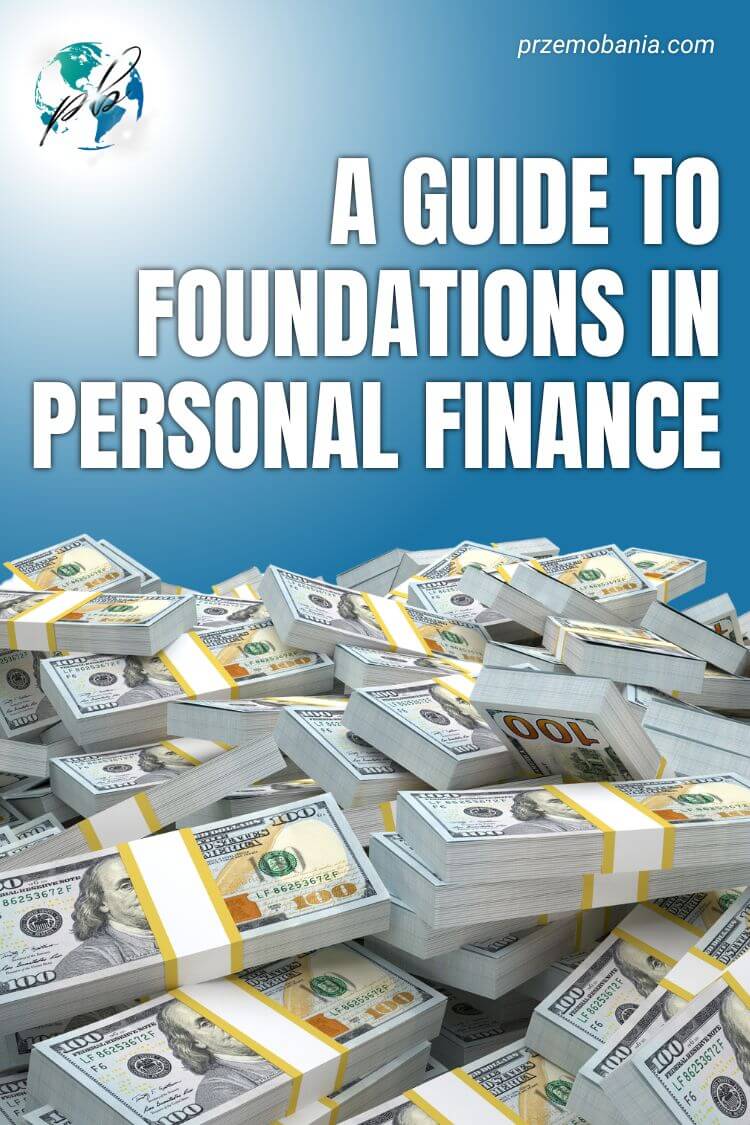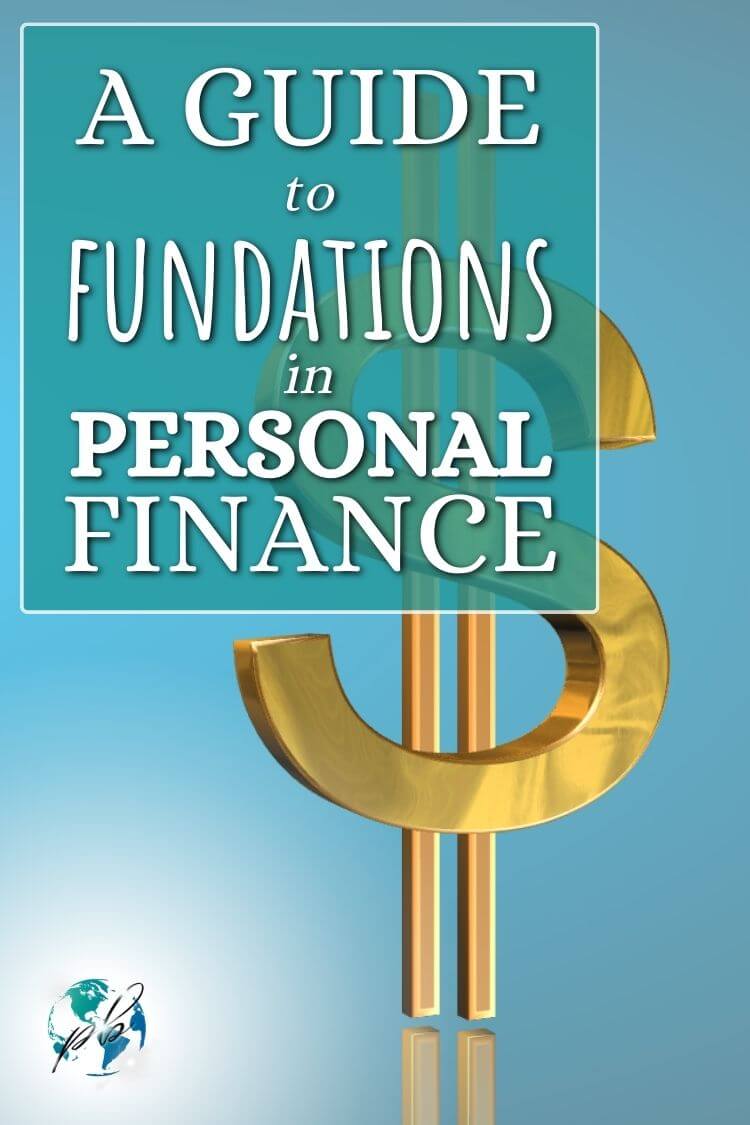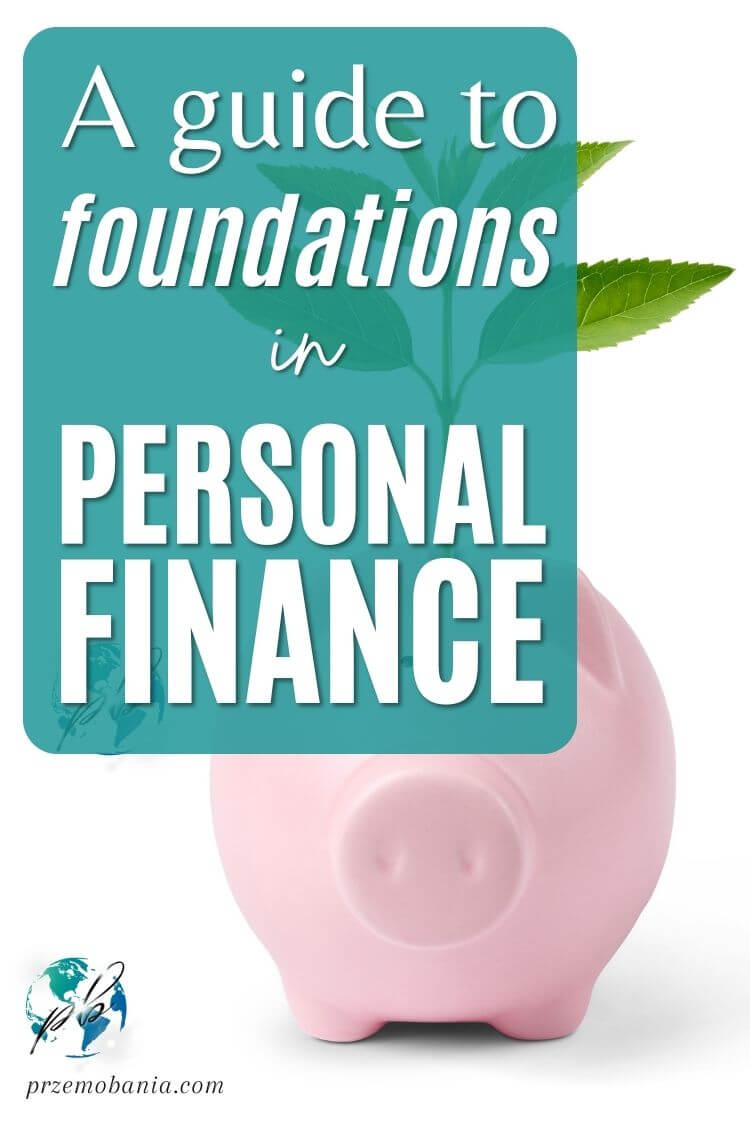A guide to foundations in personal finance.
Over the years, as I’ve built multiple blogs and read countless financial books, I’ve come to understand that a sound knowledge of foundations in personal finance is crucial in today’s ever-evolving economy. With the rise of AI and the shift towards a digital age, traditional jobs are evolving, and online opportunities are blooming. It’s a thrilling, if not slightly daunting, time to be alive!
I’m passionate about personal finance, not just because of my interest in these exciting digital opportunities, but because I’ve experienced firsthand how financial stability can impact our lives.
I originally started with a health blog, wanting to help other men like me navigate the rough seas when their partners face chronic illnesses. I’ve learned that in these moments, financial stability takes on a heightened importance. It becomes less about numbers and more about providing a secure foundation from which to face life’s challenges.
And so, in our journey together, we’ll be exploring these foundations in personal finance. We’ll dive into income and expenses, discuss the art of budgeting, and look at the value of saving and investing. We’ll tackle the role of credit, and the navigation of loans, and we’ll discuss insurance, taxes, retirement planning, and risk management.
My goal isn’t just to throw information your way. I want to help you, my dear reader, build a robust financial foundation. Whether you’re eyeing a side hustle, looking to secure your future, or seeking stability in tumultuous times, understanding these basics is your first step.
Personal finance rests on 12 pillars. These foundations include income, expenses, budgeting, saving, establishing an emergency fund, investing wisely, managing debt & loans, understanding credit, securing the right insurance, smart tax planning, retirement readiness, and risk management.
In this article, I am going to explain all of them. Let’s embark on this journey together, building our financial foundations brick by brick, towards a secure and prosperous future…
Understand your foundations in personal finance.
A strong building starts with a solid foundation. It’s the base that holds everything else up, and the same principle applies to our finances. It all starts with understanding your income and expenses and then creating a budget.
So, let’s start with income. What is it?
Well, simply put, it’s the money that comes in. For most of us, this might be our salaries or wages from our jobs. But income can also come from other sources, such as investments, rental properties, or perhaps your exciting new side hustle.
As someone who has dabbled in various online ventures, I can tell you that exploring diverse income streams can be both challenging and rewarding.
Next, we have expenses. These are the costs that we incur in our daily lives – everything from rent or mortgage payments, utilities, and groceries, to the gym membership, and those unexpected car repairs.
While some are fixed and some are variable, all expenses must be accounted for. Over the years, I’ve found that tracking my expenses meticulously has been eye-opening. It has allowed me to understand where my money goes and identify areas where I could save.
Now, once we’ve understood our income and expenses, it’s time to bring them together into a budget.
Think of budgeting as your financial roadmap. It provides a clear path, showing how much money is coming in, how much is going out, and ideally, how much is being saved.
When my wife became chronically ill, budgeting became our lifeline. It helped us understand our financial situation, prepare for medical expenses, and continue saving for our future. It’s a tool that I believe everyone should utilize, regardless of their income level or financial goals.
But I understand, budgeting can sometimes seem daunting, especially if you’re new to it. I’ve been there too.
The trick is to find a method that suits your lifestyle. Maybe it’s an app on your phone, a spreadsheet on your computer, or the classic envelope method. Remember, there’s no one-size-fits-all here. What matters is that it works for you.
Understanding your income, tracking your expenses, and sticking to a budget are the first steps in laying a solid financial foundation. It’s not always easy, and it can take some time to get the hang of it but trust me, it’s worth the effort.
Remember, we’re on this journey together. I believe in you, and I know you can master these foundational elements. So let’s keep going, strengthening our personal finance foundations one step at a time.
Build on the foundations.
Once we have our basic understanding of income, expenses, and budgeting under our belts, it’s time to think about what to do with the money we’ve managed to save. Saving and investing are two sides of the same coin, each playing a critical role in our financial health.
Let’s start with saving. You might ask, “Przemo, why is saving so important?”
Well, my friends, saving provides a safety net for unexpected expenses, allows us to achieve our financial goals, and creates a cushion for us to explore new opportunities. Like starting a side hustle, for example.
One of the best decisions I ever made was to build up an emergency fund.
When my wife became ill, this fund allowed us to navigate through a challenging time without adding financial stress to our already burdened hearts. I cannot stress enough the peace of mind that comes from knowing you have funds to fall back on during difficult times.
Then we have the topic of investing. I like to think of investing as the next step in our financial journey.
It’s about putting our money to work and helping it grow over time. Investing involves taking calculated risks, with the potential for higher returns than what a typical savings account would offer.
Over the years, I’ve dabbled in various investments – from gold and silver to blogging. I’ve learned that investing isn’t a get-rich-quick scheme. It’s a long-term strategy, built on patience and a solid understanding of your risk tolerance.
I cannot forget to mention the magic of compounding. It’s a powerful concept where your earnings generate even more earnings, and over time, your wealth can grow exponentially.
Albert Einstein famously called it the “eighth wonder of the world.” And from my personal experience, I can vouch for its wonders!
However, investing can be complex, and it’s crucial to educate yourself or seek advice from trusted professionals. There are many paths to take, and finding the right one for you depends on your personal financial goals, risk tolerance, and time horizon.
Remember, building our financial foundation isn’t a race – it’s a journey, one where each step forward, no matter how small, brings us closer to our goals. Whether you’re saving for a rainy day, investing for your future, or doing a bit of both, you’re adding another brick to your strong financial foundation.
Strengthen your financial foundations!
As someone who has experienced a lot of life-altering events, I cannot overemphasize the importance of having an emergency fund. This is a pool of money set aside to cover unexpected expenses that life can, and often will, throw our way.
As I mentioned, this could be anything from an unexpected car repair, a sudden job loss, or a medical emergency.
The emergency fund saw us through uncertain times without adding financial stress to an already emotionally fraught situation. Knowing we had a safety net allowed us to focus on what truly mattered – my wife’s health.
But how much should you have in your emergency fund?
A good rule of thumb is to aim for three to six months’ worth of living expenses. This provides a buffer in case you need to cover significant costs or manage a period of income loss.
Building an emergency fund can feel daunting, particularly when you’re just starting. I’ve been there.
But remember, every small step counts. Begin by setting aside a small portion of your income regularly. Over time, these small amounts add up, and before you know it, you’ll have a sizeable safety net.
Consider your emergency fund as financial insurance. It’s there to protect you from life’s financial surprises, providing peace of mind and stability when you need it most.
In our personal finance journey, having an emergency fund is not an option but a necessity. It’s an essential part of our financial foundation, providing stability and resilience in the face of life’s unexpected twists and turns.

The role of credit.
Credit plays an integral role in our financial lives, influencing everything from the loans we can secure to the interest rates we pay. Understanding credit can be the difference between building a healthy financial future and getting stuck in a cycle of debt.
Your credit score, a numerical representation of your creditworthiness, is determined by several factors, including your payment history, the amount of debt you have, and the length of your credit history. Lenders, landlords, and even some employers look at this score to determine how risky it is to lend money or offer a job to you.
In the early days of my financial journey, I didn’t fully understand the importance of a good credit score.
But as I delved deeper into the world of personal finance and started building my online ventures, I realized how crucial it is. A good credit score didn’t just mean I could get loans with lower interest rates. It was also a testament to my financial responsibility.
So, how can you build good credit?
Start by paying your bills on time, every time. Try to keep your credit utilization – that’s the amount of credit you’re using compared to your total available credit – low. Avoid closing old credit cards, as the length of your credit history matters. And, of course, regularly check your credit reports for errors.
Remember, building good credit doesn’t happen overnight. It’s a long-term commitment, much like our journey in personal finance. But with patience and disciplined financial habits, you can build and maintain a healthy credit score, strengthening your financial foundation.
Debt and loans in your financial life.
Debt, in its simplest form, is money that you owe. It comes in various shapes and sizes – from credit card debt, auto loans, and student loans, to mortgages. While taking on debt can sometimes be necessary, managing it effectively is key to building a robust financial foundation.
In my personal journey, I’ve learned that not all debt is created equal.
There’s “good debt”, like a mortgage for a home or a loan for a business venture, which can potentially increase in value or generate income. Then there’s “bad debt”, like credit card debt, which comes with high-interest rates and doesn’t help build wealth.
One of the most critical strategies I’ve used in managing my debts is the “debt snowball” method, where you pay off your debts in order of smallest to largest. This method allowed me to see progress quickly and kept me motivated.
Loans, on the other hand, are a tool that can help us achieve our financial goals, like buying a house or starting a business. However, it’s crucial to understand the terms of a loan, including the interest rate and repayment period, before taking one out.
My friend, navigating debt and loans can be complex. But armed with knowledge and a plan, we can effectively manage our debts and utilize loans responsibly to reach our financial goals.
Remember, every step we take on this journey, every debt we pay off, and every smart decision we make about loans, is a brick we’re adding to our personal finance foundation.
Understand and manage insurance.
Insurance can often seem like a complex maze, filled with jargon and paperwork. But at its core, it’s a simple concept – it’s about protection. It’s about mitigating financial risk and providing a safety net for life’s uncertainties.
In my financial journey, understanding and managing insurance have played a significant role. Whether it was health insurance during my partner’s illness or the insurance I needed for my online ventures, each served as a vital buffer against financial upheaval.
There are many types of insurance – health, auto, home, life, disability, and even specific ones for businesses.
Each serves a unique purpose, providing coverage for different aspects of our lives. The right insurance for you depends on various factors – your lifestyle, your financial situation, your family structure, and your risk tolerance.
One key lesson I’ve learned is to view insurance as a part of my overall financial strategy, not an isolated component. It’s not just about paying premiums and filing claims when something goes wrong. It’s about understanding the policies, reviewing them regularly, and making sure they align with my changing life circumstances and financial goals.
Investing in the right insurance may not seem as exciting as investing in a hot new stock or starting a new side hustle. But it’s just as crucial, if not more, for your financial health.
Remember, building a robust financial foundation is about more than growing wealth. It’s also about protecting it. And that’s where insurance comes in.
The world of taxes.
Taxes, though often met with a groan, are a key aspect of our financial lives. They impact your income, your property, your purchases, and yes, your investments and side hustles too. Understanding how taxes work and planning for them can make a significant difference in your financial health.
I’ve learned that taxes are not just about filing your return once a year. It’s an ongoing process, requiring proactive planning and strategies to legally minimize your tax liabilities and maximize your after-tax income.
There are many ways to approach this.
For instance, I leverage tax-advantaged accounts for my investments, like a 401(k) for retirement savings, which provide significant tax benefits. If you’re an entrepreneur or own a side hustle, understanding the tax deductions you’re eligible for can be a game-changer.
Then there are the various tax credits and deductions available to individuals and families – from education credits, and child tax credits, to deductions for mortgage interest and medical expenses. Understanding these can help reduce your taxable income and potentially increase your tax refund.
As someone who runs multiple online ventures, I’ve realized that tax planning is even more critical when you’re self-employed. It’s not just about income tax but also self-employment tax, and there’s also the need to make quarterly estimated tax payments.
Navigating the world of taxes can be complex, but it doesn’t have to be overwhelming. With some learning, planning, and perhaps some professional guidance, we can manage our taxes effectively.

Retirement planning.
Retirement might seem far off, especially if you’re early in your career or busy building your side hustles. But believe me, it’s never too early to start planning for retirement. It’s a critical part of our financial foundation and a long-term goal that needs careful thought and consistent action.
I remember when I first started to think about retirement.
The world of pensions and social security seemed daunting. But as I delved deeper, I realized that retirement planning is not just about choosing the right investment vehicles. It’s about envisioning the life you want in your golden years and then working backward to figure out how to get there.
So, how do we do that?
First, determine how much you’ll need for retirement. Consider your expected living expenses, potential medical costs, and any goals you might have, like traveling or pursuing a hobby.
Next, start saving.
Make the most of tax-advantaged retirement accounts like a 401(k) or an IRA. Take advantage of employer match programs if available – it’s essentially free money towards your retirement!
Don’t forget about diversification. Just as we diversify our income sources with side hustles, it’s important to diversify our retirement savings too. This could mean a mix of stocks, bonds, and other investments based on your age, risk tolerance, and retirement goals.
Remember, retirement planning is a marathon, not a sprint.
It’s about regular, consistent steps toward a secure, fulfilling retirement.
Risk management.
Risk management is about identifying, assessing, and addressing the various risks that can impact your financial life. It’s an essential part of building a solid financial foundation. Without it, you’re essentially walking a tightrope without a safety net.
The first time I had to truly grapple with risk management was during my partner’s illness. It made me realize that life can throw curveballs, and without a plan in place, these can derail even the best-laid financial plans.
There are various types of financial risks – market risks that can impact your investments, credit risks if you’re lending money, and personal risks like losing your job, falling ill, or encountering an accident.
The key to effective risk management lies in understanding these risks and developing strategies to mitigate them.
One of the most effective tools for managing personal risk is insurance. As we discussed in a previous section, insurance policies like health, disability, and life insurance can provide financial protection against significant personal risks.
Another crucial aspect is diversification, especially when it comes to your income and investments. This is where having multiple streams of income, like side hustles, can be a game-changer. Similarly, spreading your investments across various asset classes can help mitigate market risk.
My friends, risk management may not be the most glamorous part of personal finance, but it’s a vital one. It’s about ensuring that even when life throws a wrench in our plans, we have strategies in place to navigate through them.
Build a side hustle stack.
As the landscape of work evolves, diversifying income through side hustles has become more important than ever. I’ve personally experienced the power and freedom it brings, not just in terms of income, but also in providing financial stability and resilience.
Let’s consider my journey.
When my partner fell ill, it wasn’t just our personal life that was upended – our financial life was too. That’s when I turned to online side hustles. Starting a health blog led me down a path of exploration into the world of digital entrepreneurship.
Building a side hustle stack involves identifying and leveraging various online income streams.
These could be blogging, freelance writing, selling digital products, affiliate marketing, or offering consulting services. The key is to find something that aligns with your skills, interests, and lifestyle.
For me, blogging was the initial stepping stone.
I started writing about our journey, sharing insights on navigating health challenges, and the importance of financial stability. Soon, I was able to monetize my blog through advertising, sponsored posts, and affiliate marketing.
But I didn’t stop there. I explored other opportunities, like creating and selling online courses and offering freelance writing services. Each of these became a part of my side hustle stack, each contributing to my income in its own way.
Building a side hustle stack also involves managing your income and expenses effectively. This brings us back to our foundations in personal finance. Managing your side hustle finances involves budgeting, saving, investing, managing taxes, and, importantly, separating your personal and business finances.
My friend, the world of side hustles is vast and full of potential. It’s an opportunity to take control of your financial future, to build income streams that align with your passion, and create financial stability and resilience.
Remember, just like with personal finance, building a side hustle stack is a journey. It requires patience, persistence, and consistent effort. But the rewards – financial and otherwise – are well worth it!
So, whether you’re looking to pay off debt, save for a big goal, or simply diversify your income, consider building a side hustle stack. It’s an empowering path, one that I’m grateful to have embarked on, and one that I’m excited to guide you through.

Conclusion on foundations in personal finance.
To wrap things up, we’ve navigated the foundations of personal finance, delving into income and expenses, saving and investing, understanding credit, loans, and insurance, preparing for taxes, planning for retirement, managing risks, and the exciting world of building a side hustle stack.
All of these aspects interweave to form the tapestry of our financial lives. They are the building blocks, the fundamentals upon which we construct our financial futures. And as we’ve discovered, it’s not just about money.
It’s about the freedom, security, and peace of mind that a strong financial foundation provides.
Looking back at my journey, it’s clear that personal finance is more than numbers on a spreadsheet or balances in a bank account. It’s a life skill, a tool that has empowered me to navigate life’s challenges and seize its opportunities.
The path hasn’t always been smooth. There were obstacles, setbacks, and moments of doubt. But every step, every challenge overcome, every lesson learned, brought me closer to financial resilience and freedom. It led me to the world of side hustles, and to the empowering world of online entrepreneurship.
And this, my friends, is what I wish for each of you. Not just financial stability, but financial empowerment.
The ability to navigate your financial journey confidently, make informed decisions, build multiple streams of income, and shape your financial future.
So here’s my message of encouragement to you:
Embrace this journey. Dive into these foundations of personal finance. Explore the world of side hustles. It might seem daunting at first, but remember, every step you take is a step toward building a strong financial foundation.
FAQ about foundations in personal finance.


Przemo Bania is a blogger and writer who helps people get out of their traditional jobs to start a blogging career. Przemo also runs a health blog advocating for endometriosis and fibromyalgia…

